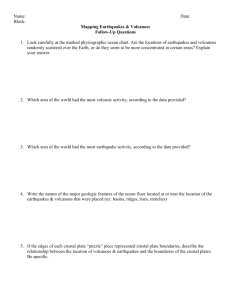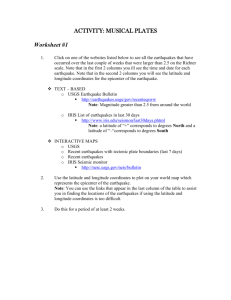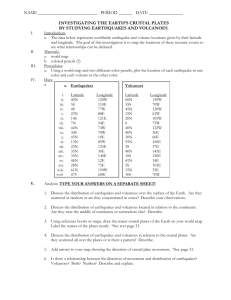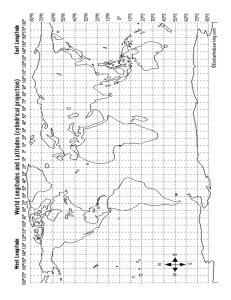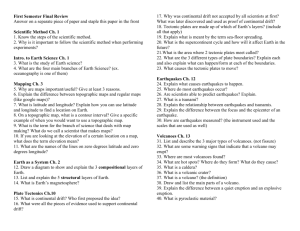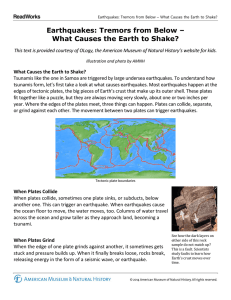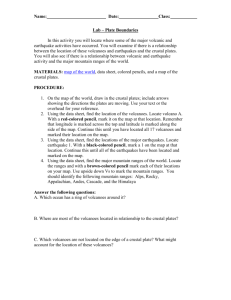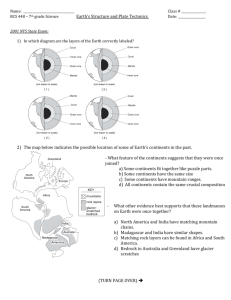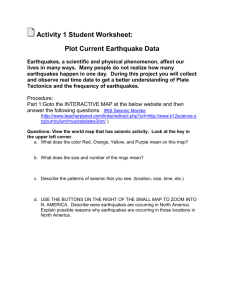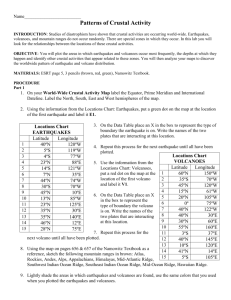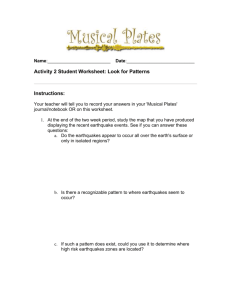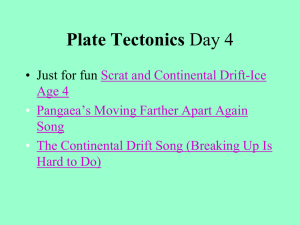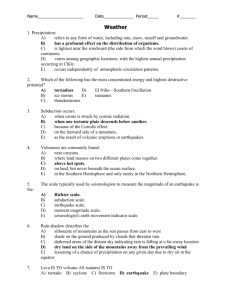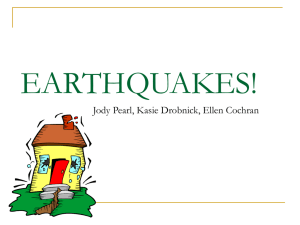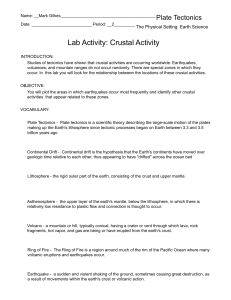Investigating the Earth`s crustal plates by studying
advertisement
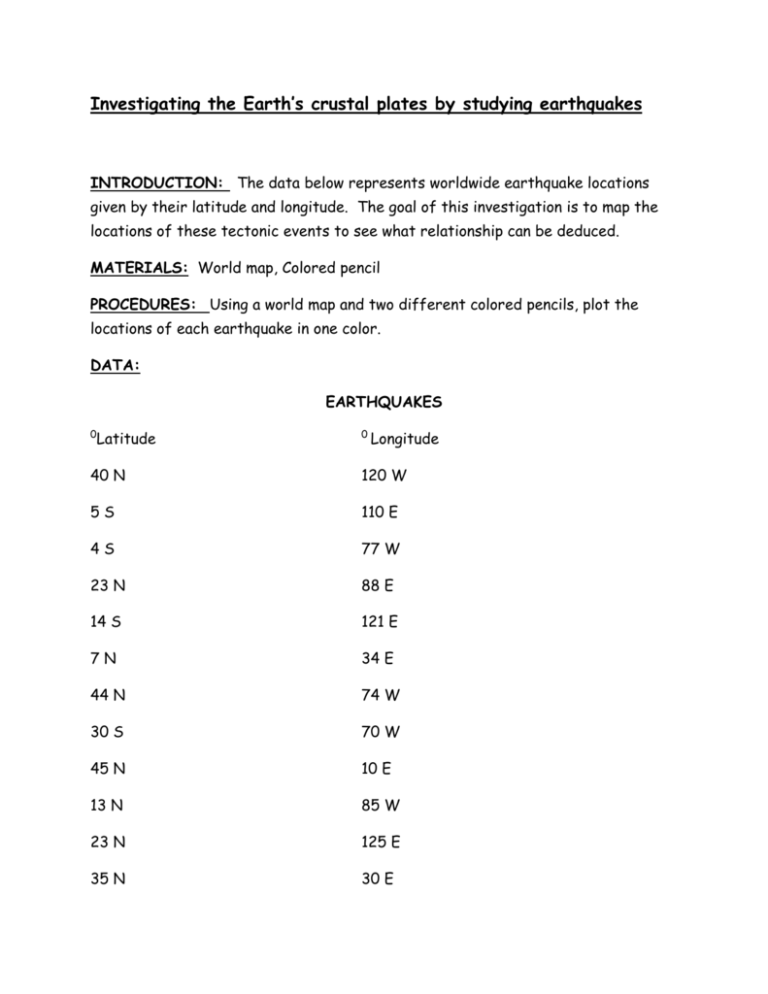
Investigating the Earth’s crustal plates by studying earthquakes INTRODUCTION: The data below represents worldwide earthquake locations given by their latitude and longitude. The goal of this investigation is to map the locations of these tectonic events to see what relationship can be deduced. MATERIALS: World map, Colored pencil PROCEDURES: Using a world map and two different colored pencils, plot the locations of each earthquake in one color. DATA: EARTHQUAKES 0 Latitude 0 Longitude 40 N 120 W 5S 110 E 4S 77 W 23 N 88 E 14 S 121 E 7N 34 E 44 N 74 W 30 S 70 W 45 N 10 E 13 N 85 W 23 N 125 E 35 N 30 E 35 N 140 E 46 N 12 E 28 N 75 E 61 N 150 W 47 S 68 W ANALYSIS: 1. Discuss the distribution of earthquakes over the surface of the Earth. Are they scattered at random or are they concentrated in zones? 2. Discuss the distribution of earthquakes located in relation to the continents. Are they near the middle of the continents or ….? Describe. 3. Using reference books or maps draw the major crustal plates of the Earth on your world map. Label the names of the plates neatly. 4. Discuss the distribution of earthquakes in relation to the crustal plates. Are they scattered all over the plates or is there a pattern? Describe. 5. Add arrows to your map showing the direction of crustal plate movement. 6. Is there a relationship between the direction of movement and distribution of earthquakes? Describe and explain.
